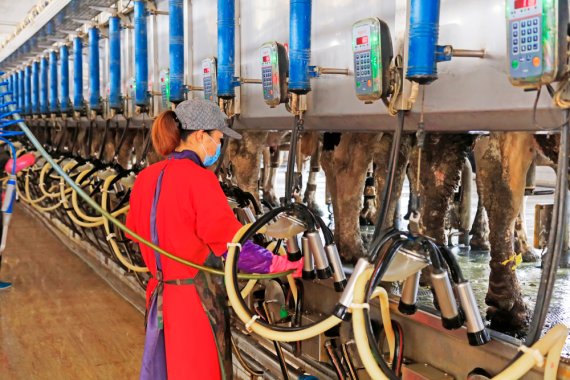© Shutterstock
The dairy consumption in China will keep increasing in the years to come. By 2050, it is expected the Chinese will drink thrice the milk they do now. Who will produce this milk, and what will be the environmental consequences involved? An international research team, which includes WUR employee Gerard Velthof, sketches several possible scenarios.
Silage
If China intends to satisfy the growing need for milk internally and using the current production methods, it will need to import large amounts of additional silage, the researchers explain. The import of silage will quadruple, doubling the emission of greenhouse gases in China. If China will only produce 75 percent of the additional milk demand and import the remaining 25 percent from abroad, this will require 30 percent more land worldwide and increase the global emission of greenhouse gases by 35 percent. And if all additional milk is produced outside of China, it would require 40 percent of additional land in Europe alone – land that is simply not available. ‘These scenarios are not realistic’, says Gerard Velthof of Wageningen Environmental Research.
Efficiency
There is only one scenario that would limit the negative effects on the environment and land use, the scientists claim. In that scenario, China ensures that its domestic dairy production becomes just as efficient as that in highly productive countries, such as the Netherlands and New Zealand. If China modernises its dairy farms and invests in environmental technology at the farms, the emissions of greenhouse gases would drop by 10 percent, and 30 percent less land would be required to achieve the required dairy production.
Drawbacks
However, this modernisation scenario also has its drawbacks, as it would lead to an increase in emissions of greenhouse gases and nitrogen from the dairy sector by 20 to 25 percent. The predicted increase in dairy demand in China will have serious consequences, one way or another, says Velthof, but modern and efficient dairy farms in China would be the least taxing for the environment and land use.
Velthof performed this study together with researchers from China, Austria, New Zealand and the United Kingdom. The research was led by professor Lin Ma of the Chinese Academy of Science, who obtained his PhD in Wageningen. Professor Fusuo Zhang of the China Agricultural University, who will soon receive an honorary doctorate from WUR, was also part of this research.

